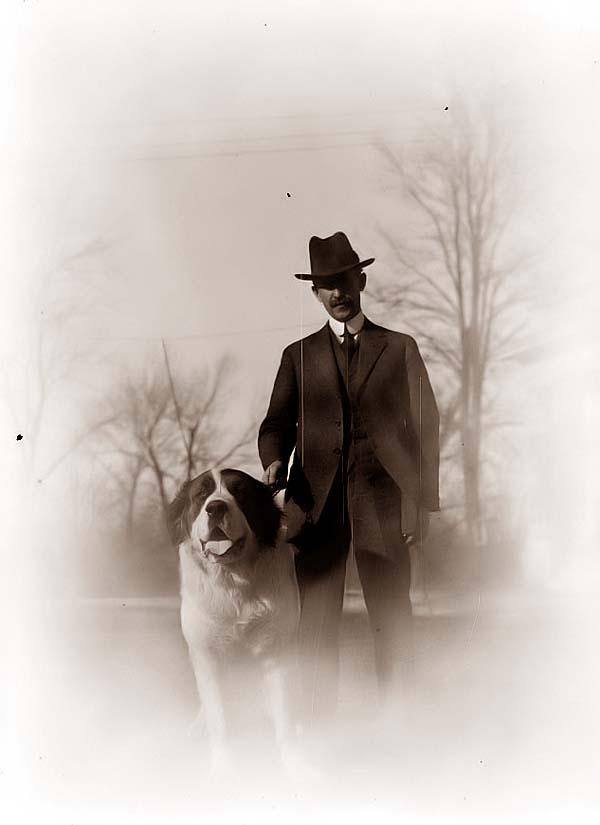
The chap in this picture is Orville Wright of the Wright Brothers, and he was a devoted Saint Bernard owner. The dog, named “Scipio,” was bought from White Star Kennels in Long Branch, New Jersey in 1917 for $75.00. According to Wright State University in Dayton, Ohio, Orville still had pictures of his dog in his wallet at the time of his death in 1948.
Saint Bernards are so much more than mountain rescue dogs that wear kegs around their necks (which historically, they never did). Here are a few other “factoids” about the breed:
• The Saint Bernard is both the National Dog and the National Symbol of Switzerland;
• St. Bernards are quite smart and rather analytic in the way they learn:
• “Gumbo,” the Saint Bernard, is the mascot of the NFL’s New Orleans Saints;
• The breed has been known as the “Saint Bernard” only since the mid-1800s. Before that, many people knew them as “Barry Dogs,” so named for the famous dog, “Barry” who rescued somewhere between 45-100 people during his career. Barry now has own monument, and his body rests in the Natural History Museum in Berne, Switzerland. The breed had many other monikers in the early days, including Alpine Mastiff, Noble Steed, Swiss Mastiff, Saint Bernardshund, Bernardiner, Avalanche Rescue Dog, Brandy Dog, Bernie, Saint, and of course, Saint Bernard.
Though the St. Bernard Monastery was founded around 980 A.D. by St. Bernard, an Augustine monk and situated in one of the most strategic locations in Switzerland – the Great St. Bernard Pass – no one really knows the exact date that the monks at the St. Bernard Monastery began keeping dogs. More certain is that they likely got their dogs – known as Dairy Farmer’s Dogs, or Sennenhunds, from local farmers. The dogs were used as general all-round farm dogs who drafted, guarded, served as bed warmers, and even walked on wheels (think of a hamster wheel) to turn spits on which a roast or chicken cooked.
The monks started breeding their own dogs by the mid 1600’s, and it’s thought that the earliest record of the breed comes from a couple of paintings by Salvatore Rosa done in 1695. We’re not sure how the Swiss dog expert, Professor Albert Heim, was able to estimate that the dogs in the paintings had been purebred for some 25 years, one reason that many experts think the breed originated between 1660 and 1670. In reality, the haunch could be grossly under estimating the actual age of the breed which could be decades or centuries older. A fire in the 16th century destroyed archives containing the story of their exact origin.
